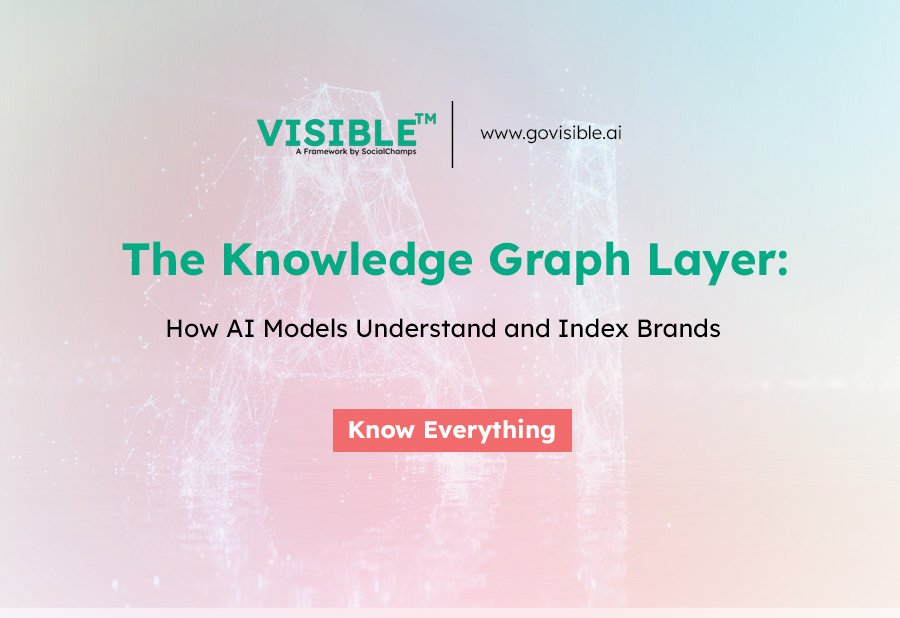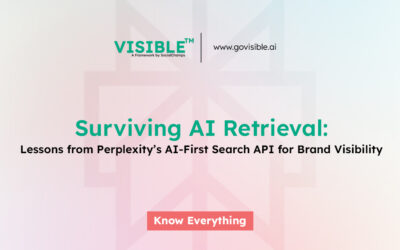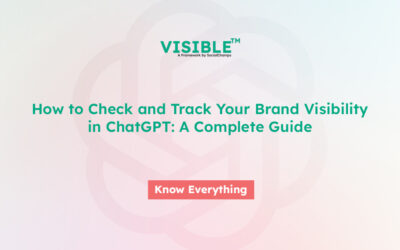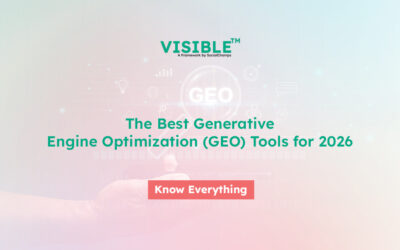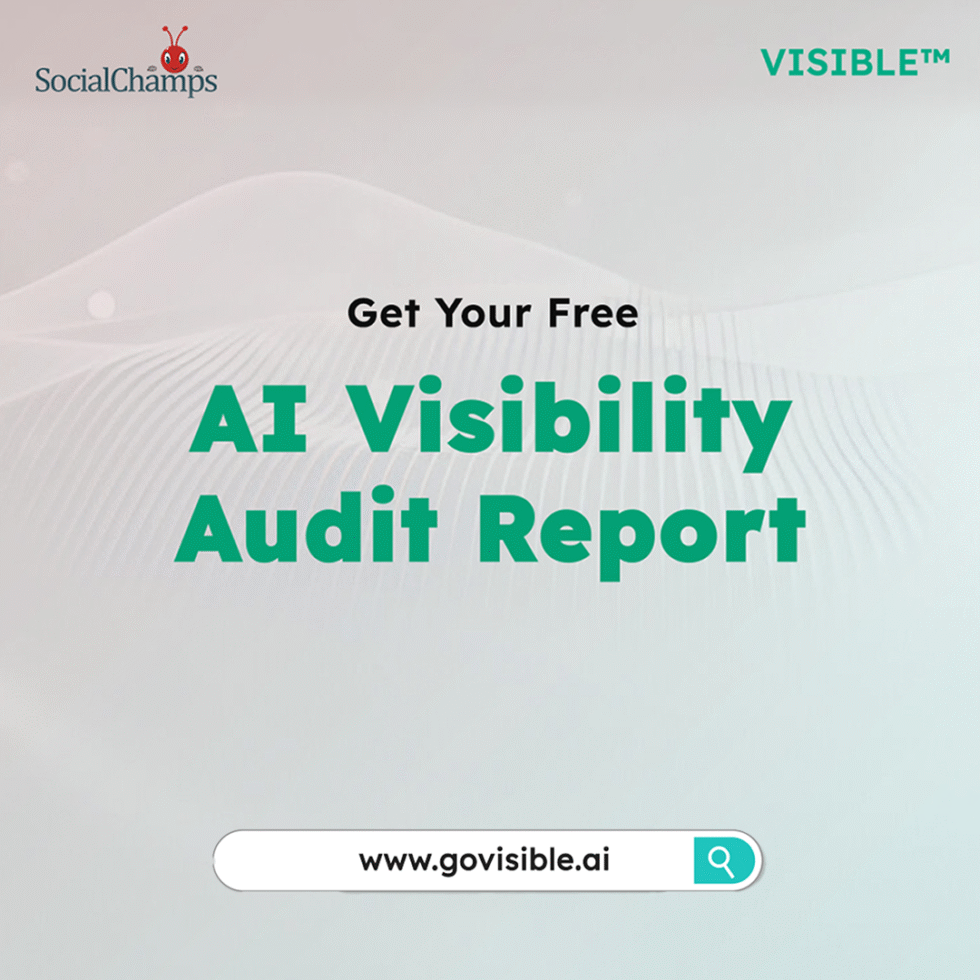What Is the Knowledge Graph Layer in Generative Engines?
At VISIBLE™, we often explain that if raw text is the ink of the web, knowledge graphs are the semantic scaffolds that give it shape. In generative engines—like ChatGPT, Claude, Perplexity, and Gemini—the Knowledge Graph Layer functions as the connective tissue between unstructured data and machine comprehension. It encodes real-world entities, relationships, attributes, and contexts in a way that makes them legible to AI models.
Why Raw Data Isn’t Enough
To truly understand and represent brand data, generative engines require more than access—they need structured meaning. Generative engines don’t just ingest web pages—they require context. That’s where the corpus-to-concept transformation happens. Raw content (blogs, PDFs, product pages) is ingested and then parsed into a knowledge graph: a structured representation of entities (like brands, products, people) and their relationships. Without this, your brand becomes a semantic ghost—unlinked, unranked, and unfindable.
Structured Semantic Layering for Indexability
Structured data—via Schema.org, RDFa, JSON-LD, or Wikidata—serves as the semantic markup that helps generative engines identify what your content means, not just what it says. Think of this as search engine optimization’s evolution: from keywords to concepts. At VISIBLE™, we call this Intelligent Entity Optimization.
Explore Intelligent Entity Optimization
How Brands Get Mapped into Knowledge Graphs
The Role of Schema.org, Wikidata, and Internal Graphs
Google, Meta, and OpenAI all build upon public semantic resources like Schema.org and Wikidata. But they also crawl brand sites for structured signals. When you define your brand’s products, founders, store locations, and mission statements using machine-readable formats, you’re not just feeding search engines—you’re architecting your presence in the AI layer.
Example: How IKEA Appears in ChatGPT and Perplexity
IKEA provides a strong example of how brand data, when semantically structured, becomes retrievable and clearly articulated by generative engines. Ask ChatGPT about IKEA, and you’ll likely get:
“IKEA is a Swedish multinational company that designs and sells ready-to-assemble furniture…”
That structured response stems from deep entity anchoring across Wikidata, schema.org properties on IKEA.com, and Wikipedia. Their knowledge graph is robust. Their brand is embedded semantically and vectorized across multiple engines.
The Link Between Knowledge Graphs and LLM Comprehension
Entity Embeddings and Vector Representations
LLMs like GPT-4 and Claude don’t just use words—they use vectors, or mathematical representations of meaning. These vectors are derived from structured relationships. The richer your knowledge graph, the clearer your brand’s embedding in the model’s latent space.
Entity Embeddings are vectorized representations of entities used by LLMs to understand and retrieve relevant knowledge. They are foundational to retrieval-augmented generation (RAG).
The Importance of Ontologies and Metadata
Ontologies provide the conceptual schema that governs how entities relate to each other—offering AI systems a logic framework for interpreting meaning beyond keywords. Ontologies define the rules of relationship between entities (e.g., “CEO of” or “product line under”). Metadata tags like dates, locations, and ownership enhance this context. Without them, AI lacks grounding. This is why the VISIBLE™ Platform prioritizes metadata extraction and enrichment in our platform pipeline.
Building the Graph: Steps for Brands
Structuring Public Content
Your website isn’t just a destination—it’s a corpus. Use Schema.org tags to mark up bios, products, services, and locations. Leverage JSON-LD to push updates. Publish to Wikidata when possible.
Linking APIs, Product Catalogs, Leadership Bios
To extend the structured web beyond static content, brands must also consider their dynamic data flows. APIs aren’t just technical assets—they’re semantic endpoints. Your product catalog should feed your knowledge graph. Leadership bios, when properly marked up, improve the discoverability of executives within generative engines.
Knowledge Graph is a structured network of real-world entities and their relationships. Used by AI models to improve understanding, reasoning, and retrieval.
Our Graph-Centric Approach
Reconstructing Your Knowledge Graph for Generative Engines
The VISIBLE™ Platform parses your public and proprietary content to extract entities, define relationships, and structure them into a graph aligned with the Generative Index. This isn’t just search optimization—it’s brand ontology engineering.
How the VISIBLE™ Platform Validates and Pushes Structured Entities
The VISIBLE™ Platform validates schema adherence, disambiguates conflicting entries, and uses our Entity Depth Index to measure semantic completeness. Then, we publish structured entities directly into channels that generative engines crawl—including Wikidata, GitHub repos, and proprietary AI submission interfaces.
Want to see how your brand’s data appears inside generative engines? Get your Entity Index Score™ with the VISIBLE™ Platform.
Future Trends: KG + RAG + Retrieval Interfaces
Knowledge Graphs are the semantic bedrock of RAG (Retrieval-Augmented Generation), directly extending the value of earlier investments in entity embeddings and metadata enrichment. This alignment ensures that structured signals are not only machine-readable but retrieval-ready—closing the loop between representation and generation. (Retrieval-Augmented Generation). As generative engines lean more heavily on external retrieval layers, the brands with the richest, cleanest graphs will rise to the top of AI response hierarchies. Your future discoverability depends on it.
If your brand isn’t structured in a machine-readable graph, it won’t exist in the next generation of search.

